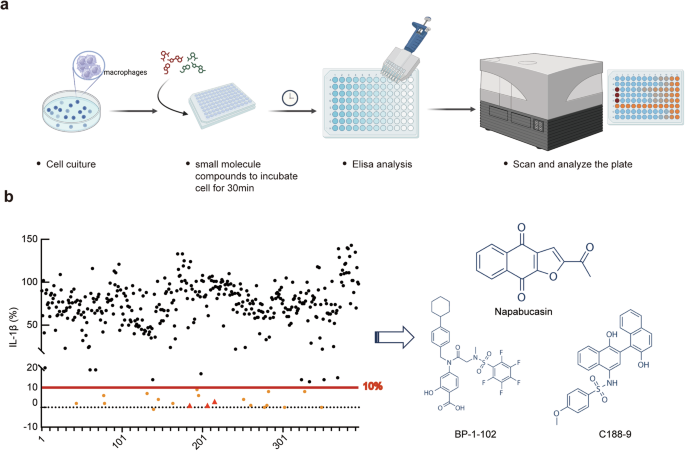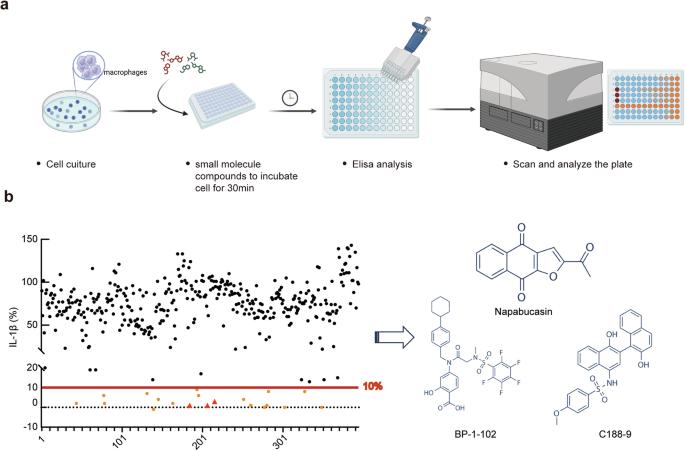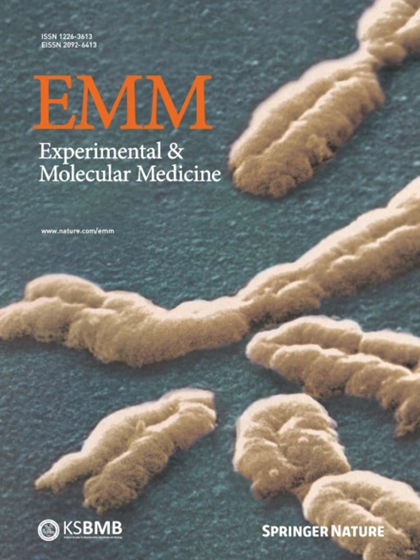STAT3 通过介导 NLRP3 线粒体转位来促进 NLRP3 炎症小体的激活。
IF 9.5
2区 医学
Q1 BIOCHEMISTRY & MOLECULAR BIOLOGY
引用次数: 0
摘要
对NLRP3转位到各种细胞器的认识为了解NLRP3炎性体如何被不同刺激激活提供了新的见解。线粒体已被证明是 NLRP3 炎症小体激活的场所,最新研究表明,NLRP3 首先被招募到线粒体,然后脱离,随后被招募到高尔基体网络。尽管已发现一些线粒体因子有助于将 NLRP3 招募到线粒体,但 NLRP3 转位线粒体的详细过程仍不清楚。在这里,我们发现了信号转导和激活转录-3(STAT3)在促进 NLRP3 转位至线粒体过程中所扮演的一个未知角色。STAT3 与 NLRP3 相互作用,并在几种 NLRP3 激动剂的作用下在 Ser727 处发生磷酸化,从而使 STAT3 以及结合的 NLRP3 转位至线粒体。破坏 STAT3 和 NLRP3 之间的相互作用会损害 NLRP3 的线粒体定位,从而特别抑制 NLRP3 炎性体在体外和体内的激活。总之,我们证明了 STAT3 是 NLRP3 线粒体转运的转运体,并为 NLRP3 的空间调控提供了新的见解。本文章由计算机程序翻译,如有差异,请以英文原文为准。


STAT3 promotes NLRP3 inflammasome activation by mediating NLRP3 mitochondrial translocation
Recognition of the translocation of NLRP3 to various organelles has provided new insights for understanding how the NLRP3 inflammasome is activated by different stimuli. Mitochondria have already been demonstrated to be the site of NLRP3 inflammasome activation, and the latest research suggests that NLRP3 is first recruited to mitochondria, then disassociated, and subsequently recruited to the Golgi network. Although some mitochondrial factors have been found to contribute to the recruitment of NLRP3 to mitochondria, the detailed process of NLRP3 mitochondrial translocation remains unclear. Here, we identify a previously unknown role for Signal transducer and activator of transcription-3 (STAT3) in facilitating the translocation of NLRP3 to mitochondria. STAT3 interacts with NLRP3 and undergoes phosphorylation at Ser727 in response to several NLRP3 agonists, enabling the translocation of STAT3 and thus the bound NLRP3 to mitochondria. Disruption of the interaction between STAT3 and NLRP3 impairs the mitochondrial localization of NLRP3, specifically suppressing NLRP3 inflammasome activation both in vitro and in vivo. In summary, we demonstrate that STAT3 acts as a transporter for mitochondrial translocation of NLRP3 and provide new insight into the spatial regulation of NLRP3. Our bodies have an innate immune system, which is the first line of defense against infections. It uses specific receptors to detect harmful pathogens. This research investigates how a protein, STAT3, affects the activation of a complex, the NLRP3 inflammasome, crucial in our immune response. The study involved experiments with cell cultures and mice, identifying how STAT3 helps move NLRP3 within cells for activation. This was seen in an experimental study. The results show that targeting STAT3 can reduce inflammation caused by the NLRP3 inflammasome. This suggests a new treatment strategy for diseases caused by too much inflammation, like gout, diabetes, and Alzheimer’s disease. The study shows the potential of drugs that stop STAT3 to manage or treat inflammatory conditions, paving the way for future research on such treatments. This summary was initially drafted using artificial intelligence, then revised and fact-checked by the author.
求助全文
通过发布文献求助,成功后即可免费获取论文全文。
去求助
来源期刊

Experimental and Molecular Medicine
医学-生化与分子生物学
CiteScore
19.50
自引率
0.80%
发文量
166
审稿时长
3 months
期刊介绍:
Experimental & Molecular Medicine (EMM) stands as Korea's pioneering biochemistry journal, established in 1964 and rejuvenated in 1996 as an Open Access, fully peer-reviewed international journal. Dedicated to advancing translational research and showcasing recent breakthroughs in the biomedical realm, EMM invites submissions encompassing genetic, molecular, and cellular studies of human physiology and diseases. Emphasizing the correlation between experimental and translational research and enhanced clinical benefits, the journal actively encourages contributions employing specific molecular tools. Welcoming studies that bridge basic discoveries with clinical relevance, alongside articles demonstrating clear in vivo significance and novelty, Experimental & Molecular Medicine proudly serves as an open-access, online-only repository of cutting-edge medical research.
 求助内容:
求助内容: 应助结果提醒方式:
应助结果提醒方式:


